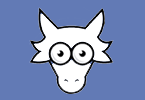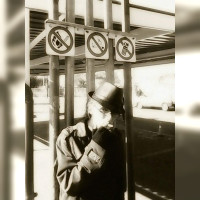Apocalyptic, post-apocalyptic and dystopian fiction is a pretty big market, and thousands of readers cling to the pages to find out what potential situations could happen when the world comes to an end – or what will take place in the years or decades after. There are a thousand-and-one ways to spin the story of the end of the world. Think “The Road”. Think “The Stand”. Think “I Am Legend”. Even fiction like the “Resident Evil” series and “Matrix” trilogy could arguably be classed as apocalyptic fiction. Here’s more about constructing your story and writing fiction about the apocalypse.
1. The Apocalypse Fiction Market
Apocalypse fiction sells. To name just a few examples, “The Road” by Cormack McCarthy has sold more than a million copies to date. It’s a phenomenon that can be felt across several media; “I Am Legend” grossed more than 585 million dollars at the box office. Why do people like reading apocalypse fiction? It could be down to the psychological reasons of reading something that thrills the reader; and it’s related to the ancient desire of wanting to know what happens to the heroes and antagonists of the story. There are many sub-genres within apocalypse fiction, including religious apocalyptic fiction, post-apocalyptic science-fiction. Don’t worry too much about which genre your story fits when you write it.
2. Choosing Your Apocalypse
In two to four sentences, how does your world end? The fun of apocalyptic fiction is being able to choose the way in which your world comes to an end. Set the scene before you write a single word.
It can be through natural means, such as through global warming and the subsequent natural environmental disasters that occur as a result; the shifting of the tectonic plates and the earth’s reaction to it in the form of sinkholes and earthquakes. You can also choose unnatural means, as through a nuclear waste apocalypse or the consequences of a war. Many writers have even taken inspiration from religious events like the rapture.
You can construct an entire alternate timeline for the decline of humanity in your fiction. Take note of important dates and occurrences. Some examples: The birth of a protagonist, the date of a disaster or outbreak or the discovery of a vaccine.
3. Creating Your Heroes
In just a few sentences, who are the heroes of your apocalypse? These will be the characters who are making the journey through your world, surviving what has happened to the earth and its people – or going through the actual events that lead to it. Sometimes they are put against a direct battle against a protagonist, other times they are facing the natural elements and will instead be causing conflict amongst each other.
Apocalyptic stories can have only a couple of heroes, or it can be an epic tale with many heroes – think of a story like The Stand that was told with many protagonists over many chapters. Which you tell is up to you.
Keep detailed notes about your characters in whichever form you like: Interviews, biographies, virtual characters. Record details like their date of birth, their traits through the journey and their character progression. Some writers also note things like catchphrases, physical appearance and habits for the character.
4. Choosing Your Antagonists
Now think of the character or characters that stand against your hero (and of course, heroes or heroines…).
The antagonist is meant to, well, antagonise. He’s meant to stand in the heroes’ way and make things harder. Sometimes there’s a chase one way or the other.
Many times the antagonist has a direct part in the apocalypse that ended the world, and other times the antagonist simply opposes the heroes in their journey and makes things as hard as possible for them along the way.
Remember to think of what happens when the protagonists and antagonists cross paths. They can interact and meet several times throughout the story, but keep the big showdown for the end.
What happens when the heroes finally reach the antagonist? Does he have something they need to save the world, for example, or does getting the antagonist out of the way mean anything for the heroes’ journey?
5. Outlining Your Epic
There are a few lucky authors who don’t outline their stories at all. But outlining is a technique used by most writers and journalists for a reason; it allows you the gift of foresight, and makes it easier to make large-scale changes to your story. You’ll spot holes in your own plot sooner this way, and think of clever turns quicker when you see it at a glance.
My way of outlining is writing something similar to a synopsis first. How would I describe the story to someone else – a friend or editor – in just a few sentences? From there, I go on to outlining the story in more detail and outline important plot points, many times in a stream-of-consciousness order that I’ll go back and look at later.
Your way of outlining might look a little different. The important things are that you record important plot points, you have at least an idea of how your story progresses and you can tell how your story begins or ends.
6. Storyboarding for Fiction
Storyboarding is an outlining technique that’s usually employed for movies, video games and comic books, but it’s something that can be especially useful when you’re writing a short story or an epic. Write down the core plot points – or draw them, or find pictures on the internet that match; put these together side-by-side in the necessary order.
You can choose to do this in the old fashioned way – though having a thousand photo’s arranged side-by-side in your apartment next to your desk might just look a little, well, serial-killer like. We prefer doing this electronically. Storyboarding is an extremely powerful tool when you’re composing fiction, especially when you combine it with thorough outlining.
An excellent example of colourful storyboarding is the epic “Heroes”. Another example that’s a personal favourite, though not necessarily a great example of apocalypse fiction, is “Max Payne” the video game.
7. The Hero’s Journey and the Big Showdown
The most important elements to apocalypse fiction are:
- The actual apocalypse
- The heroes and antagonists
- Their journey
- The conflicts they face, both external and internal
- Any other enemies – flying spiders, natural disasters, a mystery to solve…
There are other elements – these are just the core. There might be groups or isolation, there might be darkness or light, there could be natural disasters or internal battles. How you spin the story of your journey is entirely up to you. That’s where you get to have a lot of fun. It’s like playing “Sim City” and pressing the hurricane button, except your options are literally endless.
Of course, the journey means nothing if it doesn’t come down to something. What’s the point of the journey if it doesn’t have an end? There is usually a conclusion of the journey, or a large-scale fight or showdown between the heroes and the antagonist.
Sometimes there is sacrifice involved of some of the members of the group, often self-sacrifice for the sake of the others. Think of stories like “The Myst” and, once again, “The Stand”. Stephen King gave it yet another try by writing “Cell”: This time, a technological apocalypse.
8. The Elements of Your Apocalypse: Endless
There are plenty of subgenres and sub-elements that can form part of apocalyptic fiction. War; nuclear disasters; huge, killer bugs; fear of the dark or isolation; survivalist-elements; natural disasters and long journeys. There are no rules that say it can’t be a short story, and there are no rules that say it can’t be a 1, 000 page epic tale.
You can set your story before or during the events of the ending of the world, or you can set your story after the apocalypse to explain how humanity (or a select group) has been recovering after the events after the end of the world.
Sometimes there are zombies and other creatures, other times there are only human elements to the story. Again, there are rough guidelines for what constitutes apocalyptic fiction, but what you really do with the story is entirely up to you in the end, as long as your goal is excellent storytelling.
9. Suggested Fiction for Research
In any genre of fiction, it’s recommended that you do your research before you sit down to write. This helps you to get a proper grip on the genre in preparation, and you’ll quickly see what kind of stories you like and which stories really got on your nerves – and why.
This is developed skill. A kind of feel for it that you develop as a writer or journalist. You can only get this through practice: Writing a lot of stuff and reading a lot of stuff. There are thousands of examples when it comes to what you should be reading, but here’s a rough guide of some good starting points – of course, your list will likely end up looking different.
Books & Short Stories
- The Road by Cormac McCarthy
- Left Behind-series by Tim LaHaye and Jerry B. Jenkins
- The Stand by Stephen King
- Cell by Stephen King
- War of the Worlds by HG Wells
- World War Z by Max Brooks
- I Am Legend by Richard Matheson
Movies & TV Shows
- This is the End (2013)
- Seeking a Friend for the End of the World (2012)
- Terminator (1984)
- End of Days (1999)




